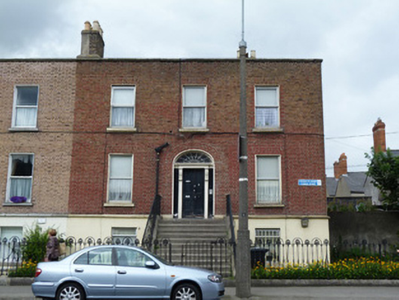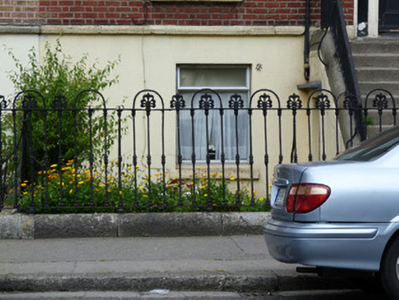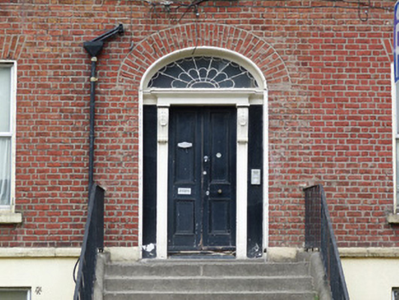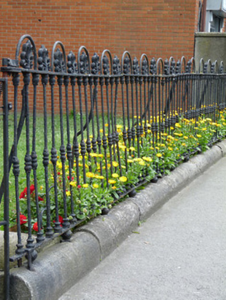Survey Data
Reg No
50060227
Rating
Regional
Categories of Special Interest
Architectural, Artistic
Original Use
House
In Use As
Apartment/flat (converted)
Date
1820 - 1840
Coordinates
314724, 235889
Date Recorded
26/08/2014
Date Updated
--/--/--
Description
Semi-detached symmetrical three-bay two-storey former house over raised basement, built c.1830, with return to rear (north) elevation. Now converted to apartments. Single-span pitched artificial slate roof, hipped to east end, partially hidden behind brick parapet wall with granite coping. Brick chimneystacks to end and party walls. Brown brick laid in Flemish bond to front (south) elevation ground and first floors with granite plinth course over ruled and lined cement rendered walls to basement. Cement rendered wall to east elevation. Square-headed window openings with brick voussoirs, rendered reveals, granite sills and replacement uPVC windows. Elliptical-headed door opening with brick voussoirs, moulded surround and double-leaf four-panelled timber door flanked by timber panelled pilasters with carved foliate console brackets supporting timber frieze and cornice and petal fanlight. Granite platform and steps with wrought-iron hand rail. Cast-iron railings on moulded granite plinth wall to front.
Appraisal
This house was constructed as one of a pair with No.3 Cabra Road to its west, and is one of the few early nineteenth-century survivors on the street. It is a significant part of the architectural heritage of the Cabra Road, adding character to the streetscape. The architectural form of the houses of Cabra is derived from the Dublin townhouse. The survival of the cast-iron railings and pedestrian gates which bound the garden areas provides a sense of enclosure marking out the private space associated with each house. The pair is well composed, maintaining a unified parapet line and window alignment. Much of the early fabric is retained including the cast-iron railings, granite steps, doorcases and fanlights.







